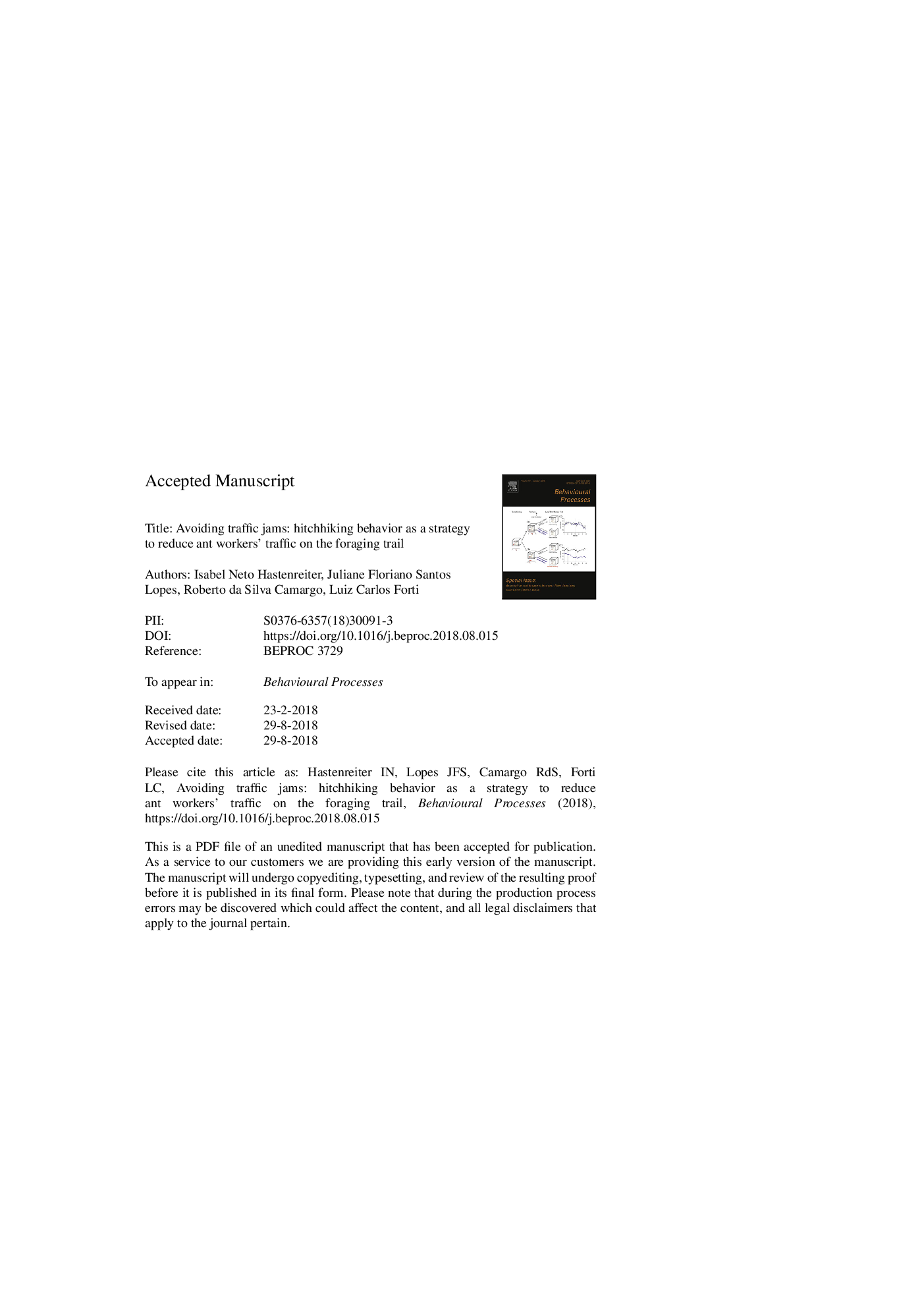| Article ID | Journal | Published Year | Pages | File Type |
|---|---|---|---|---|
| 10143146 | Behavioural Processes | 2018 | 17 Pages |
Abstract
During foraging, thousands of leaf-cutting ant workers travel along high traffic foraging trails which, when narrow, reduce the leaf delivery rate due to the reduction in workers' travel-speed. On the other hand, high worker traffic promotes head-on encounters which are supposed to mediate worker task allocation and so could constitute a cue which induces traffic reduction. Very small workers along trails, for example, could change their task between marking the trail chemically to hitchhiking. Since they assume the hitchhiker function even in the absence of phorid parasitoids, one can suppose that hitchhiker behavior could be a strategy mediated by head-on encounters to avoid the high density of workers. Thus, we studied how the variation of worker density on the trail influences the hitchhiker frequency, testing the hypothesis that very small workers climb on the transported leaves to reduce trail traffic. Therefore, five Acromyrmex subterraneus colonies were linked to a foraging area by trails of different width (1.5 or 3âcm). We counted the number of hitchhikers and the outbound worker flow. The frequency of hitchhikers increased along narrow trails, and also due to outbound workers in both trail widths. Regardless of outbound foraging flow being comparable in both trail widths, the narrower ones had high density of workers leading to a presumed increase in head-on encounters. Head-on encounter rates cause a reduction in travel speed and, furthermore, are regulatory factors of task-allocation. Thus, high density trails lead to an increase in the rate of head-on encounters which could constitute as a stimulus to task-allocation of very small workers to the function of hitchhiker to avoid traffic jams.
Keywords
Related Topics
Life Sciences
Agricultural and Biological Sciences
Animal Science and Zoology
Authors
Isabel Neto Hastenreiter, Juliane Floriano Santos Lopes, Roberto da Silva Camargo, Luiz Carlos Forti,
